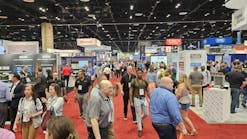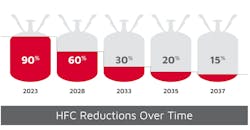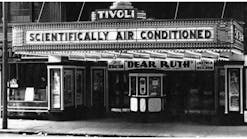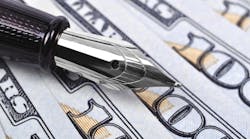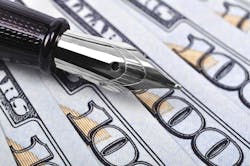In the inaugural edition of “Clark’s Remarks” in June 2013, I wrote about commercial-building energy-efficiency tax deductions authorized by the Energy Policy Act of 2005 and implemented under Part 179D of the Internal Revenue Code. It is a topic to which I have returned several times since, so, obviously, I think it’s important. For those unfamiliar with §179D, it provided—before its expiration on Dec. 31, 2013—deductions of up to $1.80 per square foot for qualifying energy-efficiency improvements made to commercial buildings. In September 2013, a bipartisan group of senators introduced S. 3591, the Commercial Building Modernization Act. This bill would have extended the tax deductions for another three years, increased the maximum amount of the qualifying deduction to $3 per square foot (or, in the case of a deeper retrofit to an older building, $4 per square foot), and would have, for the first time, allowed private non-profits and real-estate investment trusts to participate. Unfortunately, it died in Congress, a victim of politics in spite of widespread industry expectations that it would have resulted in the creation of more than 77,000 jobs.
After the demise of S. 3591, extension of 179D became part of the Tax Extenders Bill (officially the Expiring Provisions Improvement Reform and Efficiency Act of 2014, or, as it is cleverly referred to, E.X.P.I.R.E.). That version would have extended the deductions at their original values until December 2015 and modified the benefit to allow non-profit organizations and tribal governments to allocate the tax deductions to design professionals in the same manner as previously was permitted only for publically owned (government) buildings. E.X.P.I.R.E. was overwhelmingly passed by the Senate Finance Committee last April before becoming stalled in Congressional gridlock.
As of this writing, there is one final hope for extension of this important legislation, which addresses both conservative and liberal issues: jobs, climate change, and our still-lagging construction and design industry (at midyear, non-residential construction employment was more than 19 percent lower than its 2008 level). In addition to encouraging energy-efficient construction, which translates to potential savings to taxpayers of as much as $5 billion a year ($3 billion for public buildings and $2 billion for public schools), the allocation of the tax benefit to design professionals has assisted a number of small and medium architectural, engineering, and construction firms. On Dec. 3, the House passed HR 5771, the Tax Increase Prevention Act of 2014 (which includes an extension of 179D), by a vote of 378 to 46. It since has gone to the Senate; insiders expect it to be passed and the president to sign it into law.
It should not come as a surprise that this legislation is supported by a very diverse group of organizations, including The American Institute of Architects, the American Council of Engineering Companies, The Associated General Contractors of America, Building Owners and Managers Association International, the National Electrical Contractors Association, the National Association of Realtors, the Natural Resources Defense Council, the Polyisocyanurate Insulation Manufacturers Association, the Sheet Metal and Air Conditioning Contractors’ National Association, the Real Estate Roundtable, and the U.S. Green Building Council.
Passage of this bill is high on my Christmas wish list. If you agree, tell Santa and your Senators.
